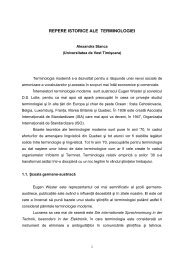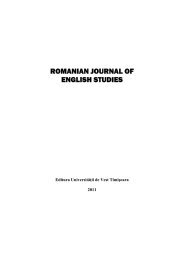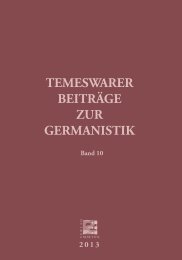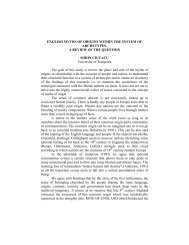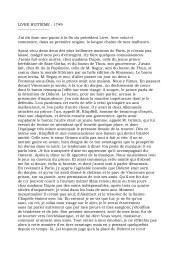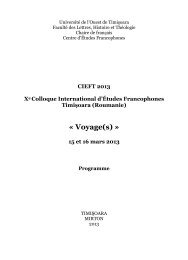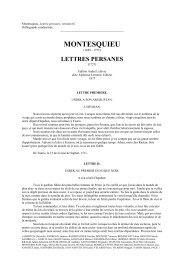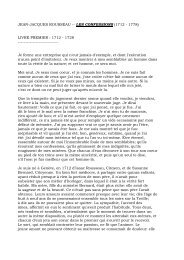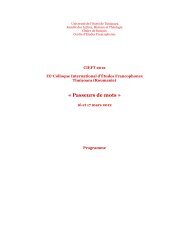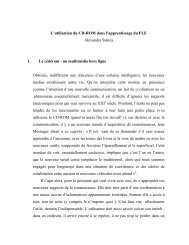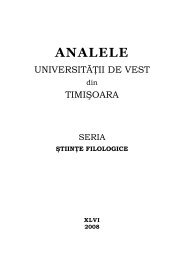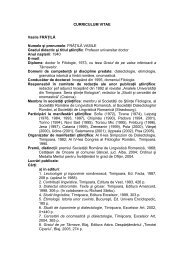TRANSLATION AND MEANING: A CULTURAL- COGNITIVE ...
TRANSLATION AND MEANING: A CULTURAL- COGNITIVE ...
TRANSLATION AND MEANING: A CULTURAL- COGNITIVE ...
Create successful ePaper yourself
Turn your PDF publications into a flip-book with our unique Google optimized e-Paper software.
These interrelationships are most complex with literary texts, since<br />
literature is part of a society with its culture and linguistic creativity. Each<br />
culture develops its own sets of contextualization conventions and focuses<br />
on a limited number of “likely inferences”. When one set of contextualized<br />
conventions does not correspond to the new found reality, the result is the<br />
so-called “culture shock”. This happens in translating culture-specific terms.<br />
Traditions and beliefs are encoded in texts and are not immediately<br />
understandable in translation. It is only when such coordinates are cleared<br />
up that texts can be said to have meaning. This is not a semantic meaning,<br />
but a culture-bound meaning, or meaning in the context of culture. Thus, the<br />
translator has to be aware of all the pragmatic aspects of language use,<br />
which are typically culture-specific, or are subject to wide variations in<br />
different cultural systems. S/he needs solid background information about<br />
the two cultures in contact, about the geographical area and about the social<br />
and political conditions. These make up the backbone of the cognitive<br />
environment of culture. Some of these features are sensitive not only to<br />
variables dependent on ethnic culture, but also to variations in material<br />
culture (food, clothes, housing) and organizational culture (organization,<br />
customs, ideas, i.e. political, social, religious, artistic), to mention only two<br />
of the types belonging to Newmark’s (1988) classification of the different<br />
categories of culture-specific terms and expressions. Culture-bound<br />
information is necessary for contextualization. The purpose of the text,<br />
motivation, and the cultural, technical and linguistic level of readership are<br />
among the contextual factors needed.<br />
One of the greatest translation traps is the psycho-cultural distance<br />
between the ST words and the TT approximately corresponding ones which<br />
makes them represent different realities. For example, there is psychocultural<br />
distance between bondiţă and waistcoat, prispă and verandah, tindă<br />
and entrance lobby, mămăligă and corn mush, scăfiţă (de brânză) and bowl<br />
(of cheese), câşlegi and carnival, rachiu and brandy, candelă and oil lamp,<br />
chimir and belt, horă and dance, hudiţă and narrow street, capra and the<br />
symbolic goat.<br />
Thus, the translator does not engage in the exact translation of words,<br />
but communicates the ideas in terms that are meaningful to the members of<br />
the target audience. The notion of mediation is a useful way of looking at the<br />
translators’ decisions regarding the transfer of intertextual reference (Katan,<br />
2004:14).<br />
However, sometimes words may not be completely meaningful due<br />
to the lack of corresponding realities (culture-specific elements).



